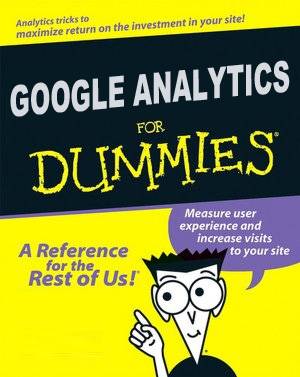Aug 8, 2012 | 6 Min Read
Using Google Analytics: Essential Website Metrics (Part 1)
Get in touch with us
Reach out to us for any inquiries or support, and let’s connect!
Web Shop Manager – Using Google Analytics

Creating and maintaining success in eCommerce is very much an ongoing battle. You can’t get everything moving in the right direction and then simply let your well oiled online selling machine fare on its own! Using Google Analytics and website metrics as your guide is a great way to keep an eye on what is and isn’t working on your website, and track the effects that changes have on things like traffic on site visibility. Those who have spent time using Google Analytics know that it can be, at times, a little overwhelming and confusing. There are so many different metrics being tracked, with very little explanation as to what each one means. But don’t let this deter you from utilizing this powerful program to its full potential, take control and learn Google Analytics definitions and how they work! Below are some of the most important Google metrics with brief descriptions of what they mean, and why they can be useful:
Using Google Analytics & Website Metrics & What They Mean
- Visitors vs. Unique Visitors: Your site visitors and unique site visitors are two completely different things. While both of these statistics are useful to keep track of, your unique visitor count is a much more revealing stat. Every time the page you are tracking is loaded onto someone’s browser, it gets tallied as a visitor. However, someone will only count as a unique visitor if it is the first time that specific IP address and web browser has visited the page. There is a catch though; this metric is tracked through the use of “cookies”. Every time a user visits your website, something called a first party persistent cookie is set in their browser. This cookie identifies them as the same user whenever they come back to the site. Cookies are deleted periodically, however, and the amount of time varies based on how each individual user has their settings set up. Since the user can delete their cookies at any time, or have a high deletion rate set for cookies, “unique visitors “ is a metric that can be tough to analyze.
- Bounces/Bounce Rate: A “bounce” is any single page visit that your website receives, meaning any visitor that lands on a page and exits the site entirely without clicking further into its pages. And thus, the bounce rate (or bounce %) would be the percent of people that came t o your site and ended up bouncing off. Every individual page has unique bounce statistics as well. When you are optimizing a page for SEO value, consider whether or not a user will find what they are looking for if they land on one of your pages via a targeted search. If your site pages aren’t offering users with the content they want, your bounce rate will be high. This is dangerous because bounce rate is a very important factor in Google determining your page rank.
- Entrances: This metric will denote the number of times a user has entered your site. Since it will be the same number as “visits” if you’re looking at the statistics for the entire site, it is useful to look at this statistic for specific site pages. This is an effective tool to determine which site pages are generating the most traffic so you can take note of the way the page is set up and the reasons why it may be a more effective page.
- Exits: Much like entrances, this statistic will be the same as visits if you are looking up the analytics over your entire website. However, if you sort these statistics by individual pages, it will show you which pages are most often the last page that a visitor looks at before leaving the site altogether. This can be very valuable in determining which site pages aren’t enticing visitors or offering them content that they deem as valuable. If a page has an exceedingly high exit rate, it may be the case that it isn’t linked well, meaning there is nothing to make the visitor want to continue deeper into the site. By providing links to other relevant site pages on top of your engaging content, you can reduce high exit rates and keep users on your website!
- Time on Page: This analytics metric can be a little hard to grasp, so let’s try an example after the initial explanation. Time on Page will give you the exact amount of time that a visitor spent on an individual site page, but only if that visitor continues on to another site page. That is the most important, and hardest to understand aspect of this metric. Basically, if a visitor enters your site and lands on a page and then subsequently clicks the back button or navigates to a different site (also known as a bounce), the time spent on your page won’t even be tracked! Even if the visitor lands on your page and gets distracted, the session will timeout after 30 minutes and it will be considered a bounce. However, once the visitor goes deeper into your site via a link or the navigation, the Time on Page for the page they are leaving will be counted. By creating content that is useful and engaging, you can drastically improve Time on Page stats.
- Source: The source website metric tells you where your traffic is coming from. Most commonly you will see that the largest volume of traffic comes from search queries, but it can also come from a direct navigation (the user typing your URL manually) or links from other sites. This metric is useful because it tells you how much of your traffic is coming from “free” or organic search results, and how much is coming from other means, like paid advertisements or inbound links. This will in turn show you what areas you can improve on to increase traffic.
Keep an eye out for part 2 of this news article- Google Analytics Metrics & How You Can Improve Yours!
More On Related Topic
Explore our highlighted blogs for the latest insights and trends in the industry.
The Importance of Branding in eCommerce
When you set out to build something as complicated as a fully operational company, you’re actually creating much more than that. In order to be truly successful, you have to create a brandA brand...
Ecommerce: 4 Marketing Myths Debunked
E-commerce continues to thrive as an online business, and it's no wonder! Online shopping is convenient, and consumers can make purchases from almost anywhere in the world straight from their smartphone.Of course, if you're...
What Google’s “(Not Provided)” Keyword Means for Your Site (SEO Explained)
The looming reality that soon 100% of keywords will be (not provided) in Google Analytics does not change SEO practices of keyword research and content optimization – it only tweaks them slightly. Google has...

Ready To Grow Your Business?
Ready to elevate your online presence? Contact Web Shop Manager for expert solutions tailored to your
needs. Let’s build something amazing together.
